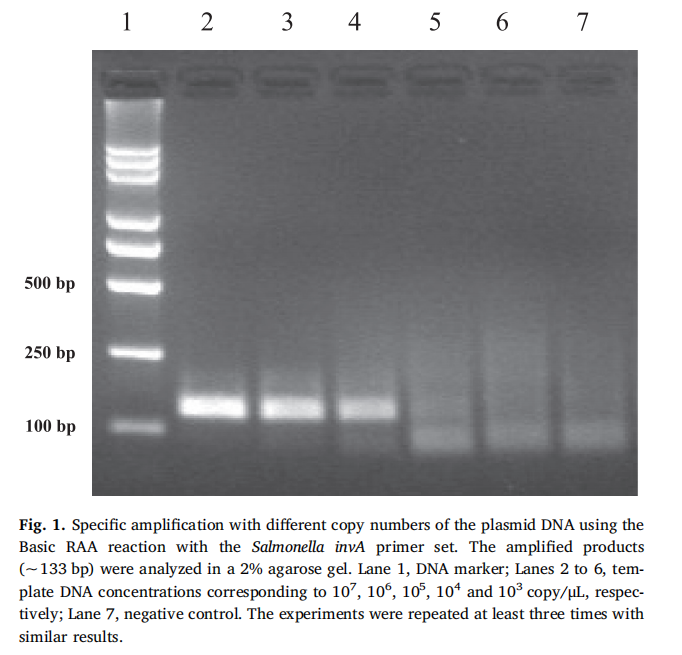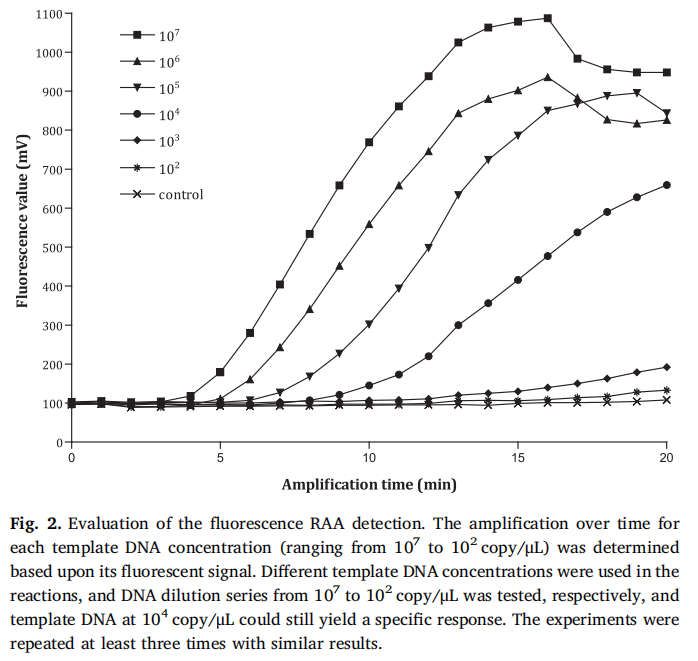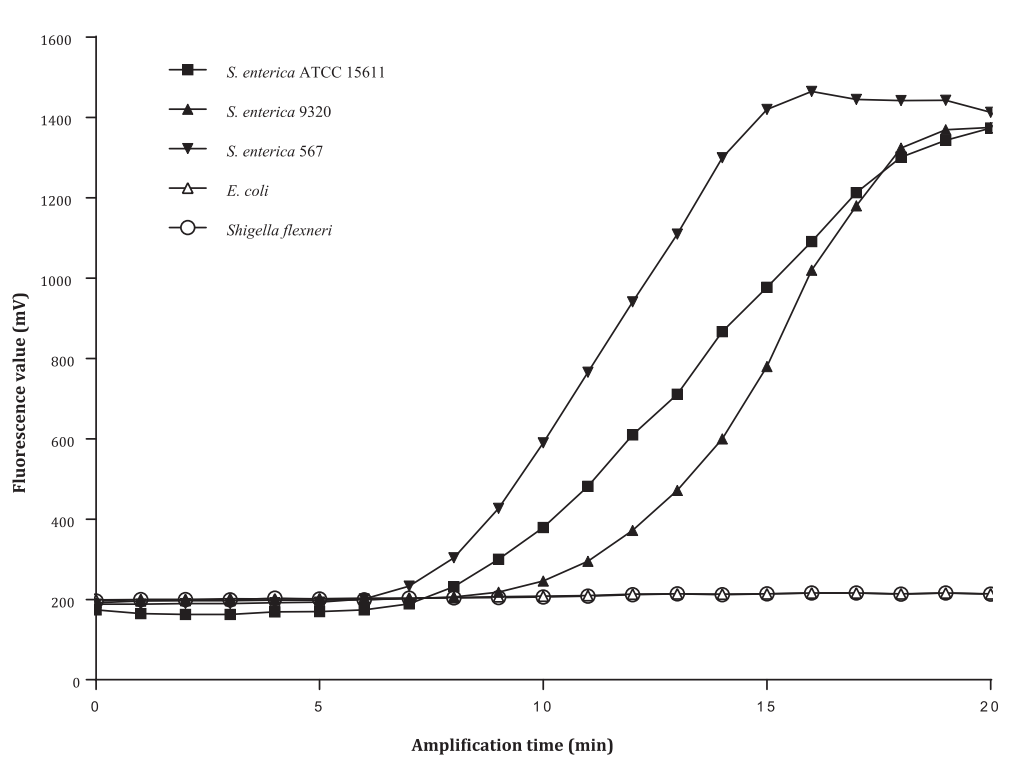
News Center
News and Development
Literature sharing: Rapid detection of Salmonella with Recombinase Aided Amplification
Release Time:
2025-06-30
This year, the theme of World Food Safety Day is science in action. As innovation determines the future, science and technology are crucial in ensuring food safety. Rapid detection of foodborne pathogens has always been a key link in food safety prevention and control. As the most common pathogen causing food poisoning worldwide, the innovation of Salmonella detection technology has significant public health implications. This study introduces a recombinase-aided isothermal nucleic acid amplification method for rapid Salmonella detection that can complete the entire testing process within 20 minutes.
Literature sharing: Rapid detection of Salmonella with Recombinase Aided Amplification
This year, the theme of World Food Safety Day is science in action. As innovation determines the future, science and technology are crucial in ensuring food safety. Rapid detection of foodborne pathogens has always been a key link in food safety prevention and control. As the most common pathogen causing food poisoning worldwide, the innovation of Salmonella detection technology has significant public health implications. This study introduces a recombinase-aided isothermal nucleic acid amplification method for rapid Salmonella detection that can complete the entire testing process within 20 minutes.
Research Background
Salmonella is a Gram-negative, non-spore-forming bacterium that parasitizes the intestines of humans and animals. It has strong resistance to external environments and is widely distributed in nature. It is the foodborne bacterium that causes the most food poisoning worldwide.
Comparison of Detection Methods
However, traditional detection of Salmonella can’t meet the current detection requirements because of its long detection period, high miss detection, complicated procedures, various reagents needed.
However, traditional Salmonella detection methods, due to their long cycles, high rates of missed detection, complex procedures, and numerous required reagents, can no longer meet modern testing requirements.
Molecular biology methods such as PCR, nucleic acid probe technology, gene chip techn and LAMP have been established, which has shorten the detection time. But most of these methods require complex instruments and skilled operators. And for LAMP method, the design of primer is difficult and has high false-positive rates.
Research Method
The principle of RAA technology is to use recombinase instead of high-temperature denaturation in PCR, unwinding double strands at 39°C. Single-strand binding proteins are used to prevent the renaturation of denatured DNA, and DNA polymerase achieves strand extension, realizing DNA amplification. The entire reaction is completed within 20 minutes, with the amplification process monitored in real-time through fluorescent probes.
Target Gene
Salmonella invA gene
Primer&Probe Design

Experimental Performance
Sensitivity
Plasmids were diluted to 10⁷, 10⁶, 10⁵, 10⁴ and 10³ copies DNA/μL, and basic detection and real-time fluorescence detection were used to evaluate the sensitivity of RAA technology.
Minimum detection limit: 10³ copies/μL
Basic RAA amplification products were analyzed by agarose gel electrophoresis (Fig 1). When the template DNA concentration was as low as 10⁵ copies/μL, specific amplification was clearly visible. In real-time fluorescence RAA detection, specific signals from template DNA as low as 10⁴ copies/μL could be recorded (Fig 2). In fact, when the detection time was extended to 30 minutes, template DNA at 10³ copies/μL also produced specific fluorescence signals.


Specificity
Fluorescence reaction detection and basic RAA amplification were performed on Salmonella standard strain ATCC15611, Salmonella strains 9320 and 567 isolated and identified from food, Escherichia coli standard strain, and Shigella standard strain. The results showed that only Salmonella standard strains and isolated Salmonella strains exhibited corresponding specific amplification curves, while no amplification was observed for other bacteria, indicating no cross-reaction.

Advantages & Innovations
1.Isothermal conditions with short amplification time
2.No need for complex laboratory facilities or expensive equipment
3.Scalability: The RAA system can also be configured for high-throughput detection, enabling on-site rapid testing of Salmonella or goods
Conclusion
This method, using RAA technology as a scientific shield, has great potential in foodborne Salmonella research and clinical diagnosis, creating new solutions and providing more possibilities for food safety prevention and control.
QT Biotech Co., Ltd.
Tel: +86-510-85385531
Mobile: +86-18921157475
Email: qt@qt-bio.com
Website: www.qt-bio.com
Address: No. 97, Xingye Building B, Linghu Avenue, Xiwu District, Wuxi City
Racing against time, guarding life safety

WeChat Account

Official Public Account

